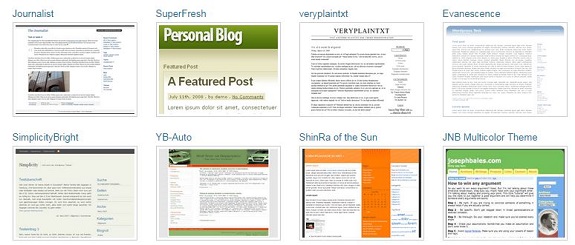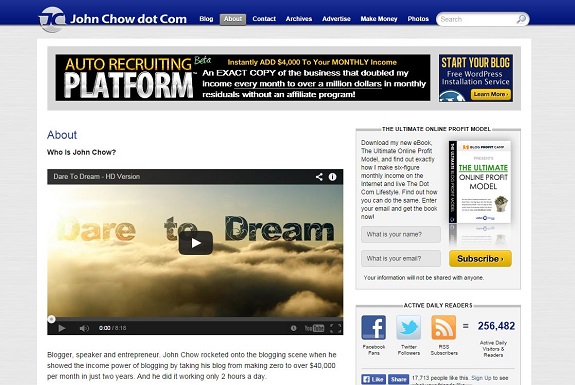Whether you take a look at larger, commercial blogs like Mashable or you turn your attention toward a “humble” personal blog like John Chow dot Com, you’ll find several key elements that all the successful blogs have in common. While these elements will hardly guarantee any sort of real success for any given blog, it becomes infinitely more challenging to rise to the top of the heap if you are missing any of these pieces to the puzzle.
1. Custom Blog Design
WordPress is a wonderful and powerful platform. Better still, it’s completely free for you to download, install and use to your heart’s content. The problem with that is that it is completely free and thus you’re going to have a lot of other bloggers using the same platform. If you stick with just the default theme and do nothing to it, you can’t expect to be anything more than just another wallflower in the blogging dance.
Ideally, you’ll want to hire a web designer to create a completely custom theme for your blog that you can then tweak and update down the road. This gives your blog a unique look that is in line with your overall branding. Remember to keep your color scheme consistent and don’t forget to get a great header image too.

2. Accessible Comment System
One of the key differences between modern blogging and the traditional publishing industry is that the latter consists largely of one-way communication. The journalist writes his story, the reader reads it, and that’s the end of that. With blogging, it’s more about continuing a conversation. The blogger writes a post, the reader reads it, but then the reader can ask questions or provide opinion by leaving a comment. You want to make that process as painless as possible while still protecting yourself against the nasty spam bots.
If you currently require visitors to register with your site before commenting, change that. The open commenting system in WordPress works just fine, but you can look into alternate systems like Disqus or the ones that include connecting with Facebook too. The most important thing is to make it seamless and easy.
3. A Great “About” Page
In general, the majority of your readers are going to get a decent sense of what your blog is all about by just reading a few of your posts. This is easier when your niche is well-defined, but it can be more challenging if your blog is like mine or John’s and it takes on a broader array of subject matter. That’s where your “About” page kicks in. Make it personal and help your readers connect with what you have to offer (and why they should care). This is perfect for when you receive any media or interview requests too, which can further bolster your credibility and visibility.

4. A Monetization Strategy
This goes with the assumption that you want to make money from the blog. Even in the case of corporate blogs that aren’t intended to make any money directly, they do generate revenue indirectly by improving brand awareness and public outreach. In the case of the directly monetized blog, be clear about what you are trying to achieve. Is the goal to promote your own products and services? Is it monetized through affiliate marketing? What about direct sales or advertising networks? Is one strategy conflicting with another?
5. Easy Contact Information
I’ve come across so many blogs that don’t even have a contact page at all, nor do they have any links to a Facebook page, email address or Twitter profile. In line with the fourth point above, you want to make sure that readers (and potential advertisers) have an easy time getting in contact with you. A simple contact page or contact form is the easiest way to do that.
